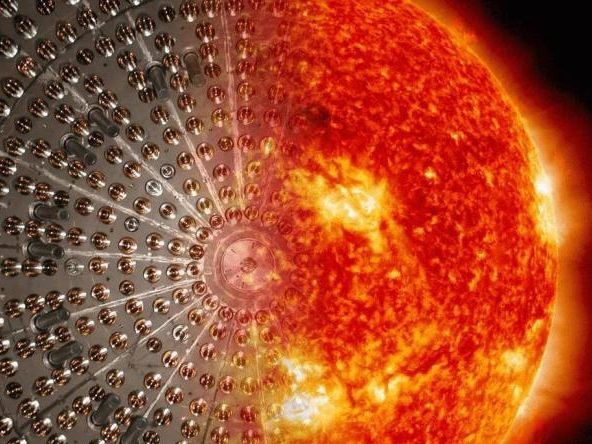November 26 A recent astrophysics research paper published by the internationally famous academic journal Nature said that scientists have detected neutrinos generated by the solar secondary fusion cycle through a high sensitivity detector, and measuring these neutrinos can understand the structure of the sun and the sun. The abundance of elements in the core provides new clues that will help people understand the dominant energy sources of different stars.
According to the paper, the energy of stars comes from hydrogen-to-helium nuclear fusion, which occurs through two processes: the proton-proton chain reaction, which only involves hydrogen-helium isotopes, and the carbon, nitrogen and oxygen cycle, which is catalyzed by carbon, nitrogen and oxygen fusion. The proton-proton chain reaction is the main energy generation method of stars of the same size as the Sun, accounting for about 99% of the total energy produced, which has been widely studied. Studying the carbon, nitrogen and oxygen cycle is more challenging, because the neutrinos produced through this mechanism are only a few more than background signals every day.

In a newly published paper, the Boresino Collaborative reported that neutrinos emitted during the solar carbon, nitrogen and oxygen fusion cycle have been detected and have high statistical significance.
They use the high-sensitivity Borisino detector of the National Laboratory of Granzaso, Italy, which can exclude or explain most background noise sources.
The authors of the paper said that these results represent the first known direct experimental evidence of the carbon, nitrogen and oxygen cycle, proving that the carbon, nitrogen and oxygen cycle contributes about 1% of the solar energy (in line with theoretical predictions).
The author of the paper proposes that measuring neutrinos produced by carbon, nitrogen and oxygen fusion can determine the abundance of carbon, nitrogen and oxygen in stars.
It is believed that the carbon, nitrogen and oxygen cycle contributes to the energy production of stars larger than the Sun. Understanding the abundance of elements heavier than helium (i.e. metallicity) in stars helps people understand the dominant energy sources of different stars.
In the corresponding “news and opinion” articles published in the same period of Nature, peer experts said that the work of the Boresino Cooperation Organization allows scientists to further fully understand the formation of the Sun and massive stars, which may define the research objectives in this field in the next few years.



